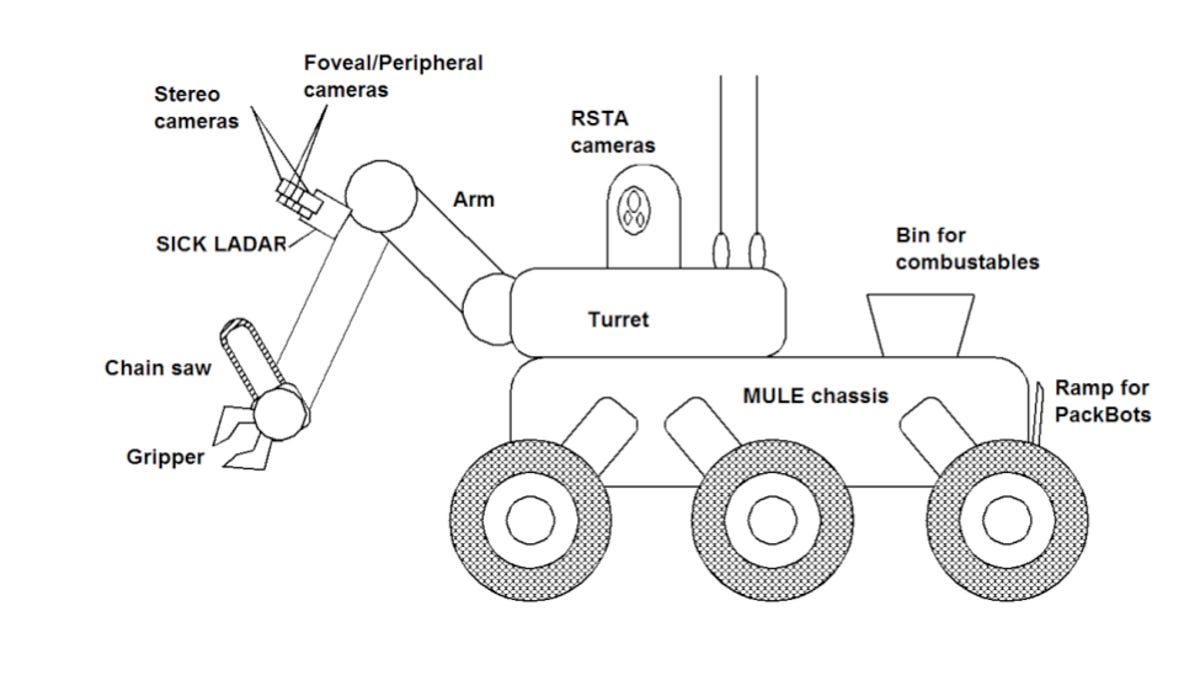Grazing robot would run on biomass
The biologically inspired Energetically Autonomous Tactical Robot concept conjures up an animal-like ability to find and extract energy as it goes.

A robot's potential advantage in autonomy is limited by its need to constantly refuel, but what if the robot could graze its way through a mission, skipping the gas station and foraging for biomass fuel along the way?
The biologically inspired Energetically Autonomous Tactical Robot (EATR) is designed to do just that--find, ingest and extract energy from biomass throughout its operating environment, and switch to conventional or alternative fuels (such as gasoline, diesel, propane and solar) when needed (see PDF).
Robotic Technology of Potomac, Md., and Cyclone Power Technologies of Pompano Beach, Fla., have completed an initial stage in a collaboration that could lead to the world's first grazing robot. The system would obtain energy by "engaging in biologically-inspired, organism-like, energy-harvesting behavior"--in other words, foraging and eating to keep itself going.
It's a tall order. The robot will need to first identify a suitable biomass (wood, grass, paper, etc.) and avoid the indigestible (rocks, metal, or glass). It must spatially locate and manipulate the source; cut or shred to size, then use its robotic arm and "end effectors" to grab, lift and dump it into the furnace, where it will be ingested and converted to enough electrical energy to power the robots systems. This stage is taken care of by the Cyclone engine, a modern-day external combustion, steam engine that can run on virtually any fuel.
The robot must make appropriate menu and other choices through a framework of sensors, sensor processing, databases, computer models, and machine controls, all linked and operated such that the system behaves with a modicum of smarts.
This coupling of compact steam generation with the beta biomass furnace, if it comes to fruition, could put the U.S. military one step closer to an autonomous robot able to perform long-range, long-endurance missions without the need for manual or conventional refueling.